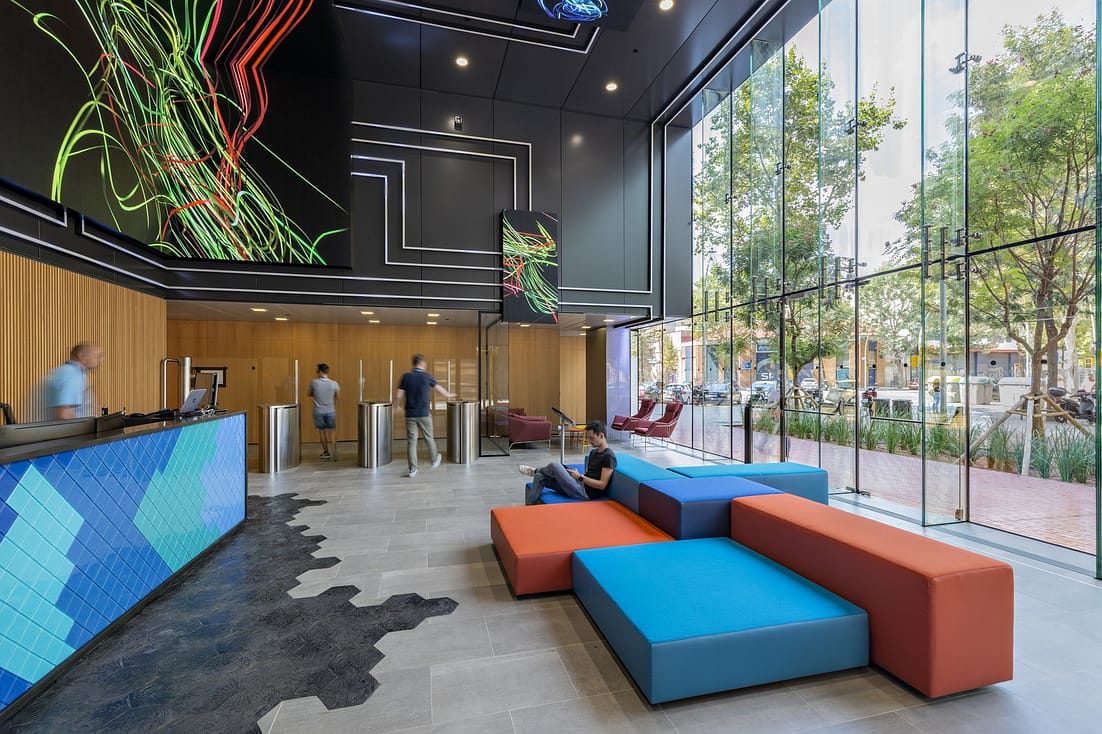By Guy Messick, AIA | Director of Design Intelligence
As long as the entire field of workplace experience and design is in various stages of preparing for the return to the workplace, there will be a lot of organizations wishing they had access to a crystal ball. No one is entirely sure what the phased re-entry process will look like, how their teams will feel when it is underway, and in many cases when it will begin. With every unique office layout, and assortment of cultures and workstyles, comes the need for new etiquette, procedures, and infrastructure. To complicate matters, recent polling shows that 50% of Americans are moderately-to-very concerned about being exposed to the coronavirus in the workplace, and until that number is as close to zero as possible, workplace designers and strategists will be burning the midnight oil trying to glimpse into the future of office space and make every preparation possible.
While IA Interior Architects may not have a crystal ball, the work of The Revived Workplace is helping our stakeholders see as far into the future as possible, and no aspect of this program accomplishes this quite as literally as Quanta™.
Powerful, Precision-Driven Design
As part of IA’s proprietary Design Intelligence toolkit, Techni, our cloud-based digital space planning tool, Quanta™ (powered by Saltmine™), transforms a traditionally time-consuming planning process into rapid, real-time collaboration. It allows IA team members and clients to immediately visualize how incremental programmatic changes impact the space plan, and how it adheres to federal, local, and organizational requirements and needs, respectively. Elements are then brought into Revit, streamlining the subsequent design stages.

IA’s Quanta™ Revived Workplace toolkit brings our workplace readiness assessment and action plan to life in a single system that might otherwise have to be visualized separately, and over a series of time-consuming reviews. Our approach unites social distancing parameters, compliance algorithms, hygiene/sanitation catalogues, protocol signage and graphics, and navigation systems so that our clients are able to make the most informed decisions, faster and with more accuracy. Together, we can view in real-time and in 3D, the implications of the customized workplace revival plan.

The above image depicts a workplace that has implemented a cycling reentry system (having staff occupy certain spaces on A days and B days). The visualization tool depicts social distancing compliance (green spaces) as well as layers that define and track alternating team occupancy (blue for A days and red for B days).
Simulating How We Experience Space

IA can now offer its clients the opportunity to simulate how lobby spaces will be used under a wide array of circumstances. Confidential client in Barcelona, Spain. Photography © Jose F. Parreño
In addition to offering a glimpse into how space will function when everyone returns to their desks, IA now also empowers teams with the ability to simulate how users will travel to and from them, from ingress to egress. Utilizing a series of algorithms to project how pedestrian traffic will change over the course of the day and under varying degrees of stress, we will be able to perform a proximity analysis that ensures users feel comfortable in offices, campuses, lobbies, common areas and anywhere foot traffic occurs. This tool will enable building owners, tenants, and IA to collaborate in determining actual occupancy while ensuring compliance.
Long-Term Plans
IA research suggests that establishing a phased re-entry to the workplace is the first step an organization should take in ensuring its people feel comfortable and safe returning to the workplace. As organizations begin bringing their people back into the office, it will be imperative that short-term progress is measured using tools like Quanta™ to inform longer-term strategies. Along with the other tools that make up The Revived Workplace program, Quanta™ will create a cohesive environment, bringing together people, processes, and the myriad details that are a part of preparing the workplace and the spaces around it for the post-pandemic workforce.

